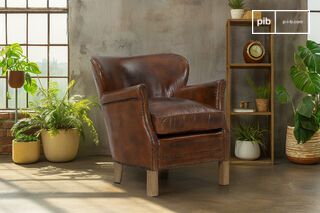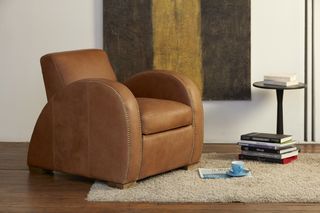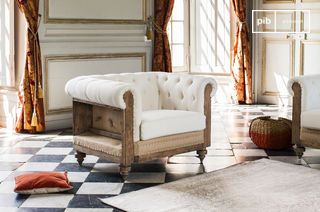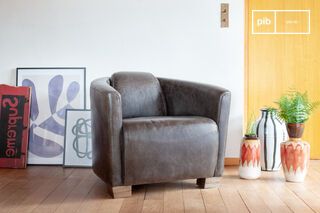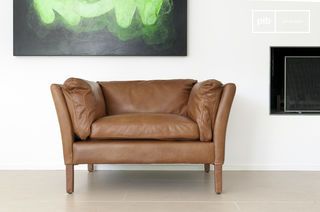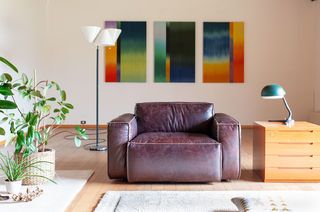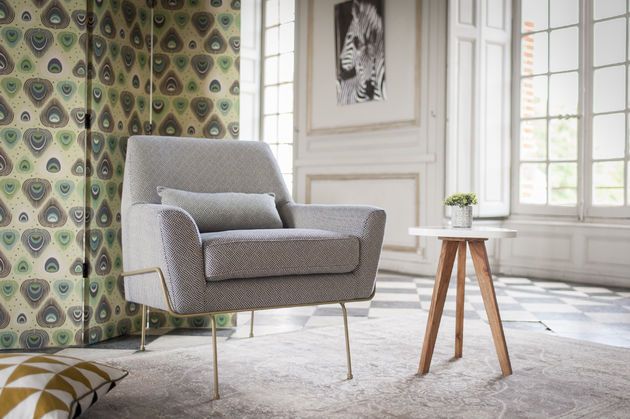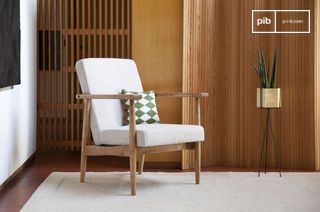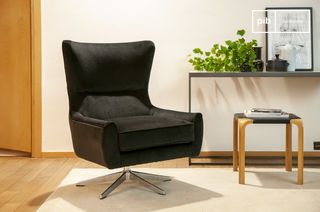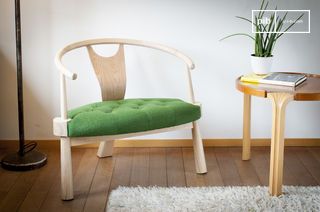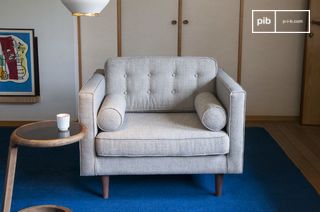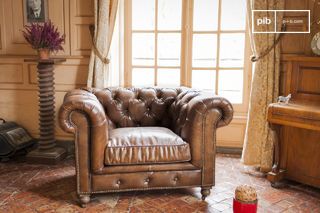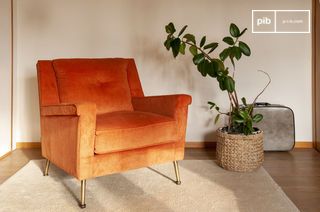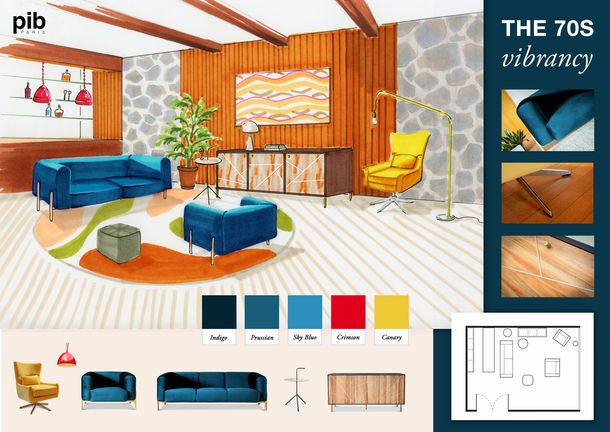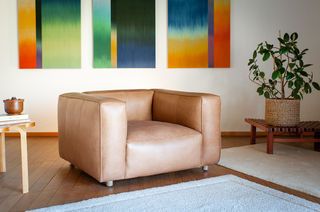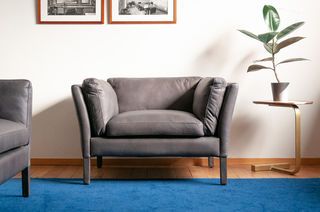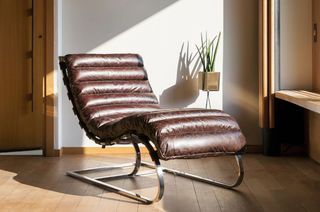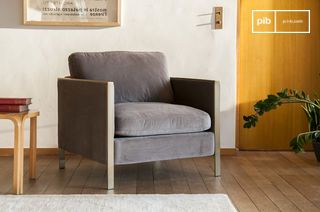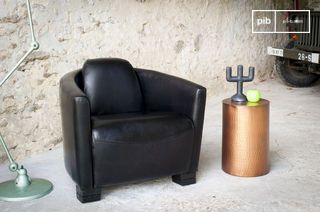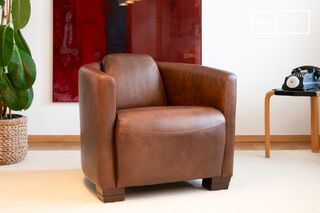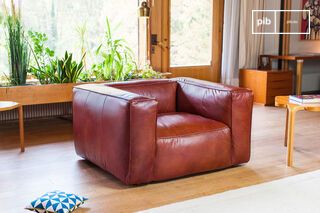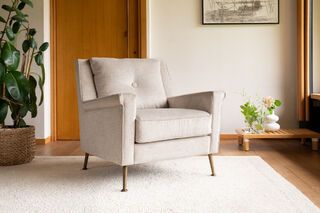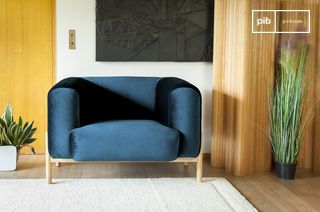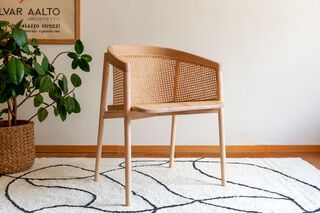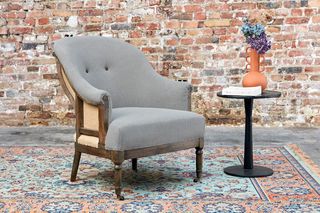Living room armchairs
Lounge seating complements the sofa, while structuring the space. Their smaller size means they can be used in a variety of settings, without overloading the room. Some models feature a high back, others a deeper seat or a wraparound shape. The lounge chair category includes stand-alone pieces, designed to fit into an overall composition. Their use depends on the frequency of use, the volume available and the balance sought in the layout.
read more >Filters
10 festive days
10% off our tables and consoles
Welcome your guests in style · Limited stock
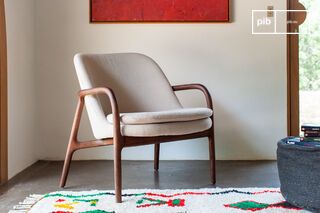
Solid ash armchair with ecru bouclé fabricNodia
€629 €495-20%

The lounge chair: secondary seating with a structuring function
The lounge chair fulfills a dual function: it provides occasional or complementary seating, while contributing to the legibility of the layout. Through its shape and positioning, it can modulate circulation, create autonomous zones (reading corner, waiting area) or complement a main sofa. Its presence must be thought out with a view to balancing volumes and uses, without taking up space or leaving unnecessary gaps. The living-room armchair differs from the office or bedroom armchair in its proportions and integration into the communal living space.
Depending on the configuration, it can sit opposite the sofa, diagonally to open up the perspective, or against a wall to free up the center of the room. Some models are static, others swivel, but all must guarantee sufficient stability on both hard and soft floors. Models with sloping backrests or wide armrests are suitable for prolonged use, while compact formats favor flexibility of installation.
Formal typologies and possible combinations
The category includes various typologies: straight, club, wrap-around, low, swivel, high-leg or solid-leg armchairs. The choice depends on the expected posture (relaxation, reception, reading) and the furniture already in place. A wraparound armchair will tend to visually mark the space, while a more linear model will blend into the overall composition. Material also plays a role: textured fabric upholstery introduces relief, stretched leather adds visual density, velvet catches the light differently depending on orientation.
To maintain visual coherence, you can choose to recall an element of the sofa (shade, base, material) or, on the contrary, create a deliberate contrast. The lounge chair does not necessarily have to be identical to the rest of the furniture, but its integration requires a clear understanding of its function and place in the ensemble.
Dimensions, uses and layout
Standard dimensions vary according to model, but an average width of 70 to 90 cm allows comfortable seating without excessive impact on circulation. The lounge chair is generally placed around the periphery of the central area, sometimes facing a focal point (coffee table, fireplace, bay window). It must have sufficient clearance to move around and stand up without constraint. In small living rooms, a visually light armchair with an airy base and an openwork back will help maintain an impression of openness.
Usage also determines the choice of upholstery. A seat subjected to intensive use will require a resistant textile, removable if possible. An armchair that is seldom used can accommodate a more delicate upholstery, consistent with a logic of occasional or decorative use. Upholstery, foam density and seat depth should be adapted according to posture habits (dynamic, relaxed, semi-recumbent).
To sum up, the lounge chair is a mobile but structuring piece, whose layout and shape influence the overall interpretation of space. It is evaluated according to three main parameters: its function, its insertion into the volume, and its visual impact within the furniture as a whole.
In short, the lounge chair is a mobile yet structuring piece, whose placement and form influence the overall reading of the space
